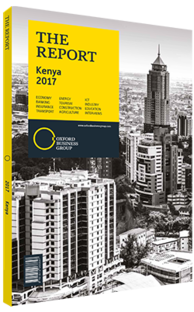Akinwumi Adesina, President, African Development Bank (AfDB): Interview

Interview: Akinwumi Adesina
Why is regional trade integration in Africa so low?
AKINWUMI ADESINA: Intra-African trade is indeed just about 15% when compared to other regions such as the EU (60%), East Asia (50%), North America (41%) and Latin America and the Caribbean (20%). Africa’s share of global trade is just about 3%. The principal reasons for this low level of intra-African trade are inadequate infrastructure – with a deficit estimated at $60bn per annum – along with a number of tariff and non-tariff barriers.
The AfDB will continue to invest heavily in high-quality regional infrastructure and work with member countries to remove the soft barriers to effective regional integration related to trade and transit facilitation. From 2004 – and with a renewed emphasis from 2009 – the AfDB has significantly increased its infrastructure financing, which now accounts for over 45% of the bank’s annual financing. From 2004 to 2015 the AfDB financed infrastructure projects valued at a total of $32bn, and in the last five years alone the bank has spent over $19bn in the infrastructure sector, particularly in the transport and energy subsectors.
At the AfDB we also have a trade finance programme, through which we finance lines of credit for trade, risk participation agreements and soft commodity facilities to institutions. We have developed these schemes in a bid to boost intra-African trade. In the past two years of the programme’s existence, it has financed over 1000 trade transactions, with over 85 financial institutions, for a total of $3bn. We are in the process of updating the business plan for the programme, which will increase trade financing to over $5bn by 2018.
What steps can be taken to help bridge the funding gap for infrastructure in Africa?
ADESINA: Public sector funding is not up to the task of solving Africa’s infrastructure challenges. The key is to leverage other sources of capital, particularly private sector capital and long-term funding options such as pension funds and sovereign wealth funds (SWFs).
The value of African SWFs rose from $114bn in 2009 to $162bn in 2014, and pension funds currently stand at $334bn. Remittances also increased from $11bn in 2000 to $62bn in 2014. Private equity inflows currently stand at about $20bn per annum, and foreign direct investment inflows rose from $10bn in 2000 to $53bn in 2015. Growth across these sources of financial capital can be leveraged to fund Africa’s infrastructure deficit.
Also important are instruments that reduce risk for private sector players seeking to become involved in infrastructure. At the AfDB, we have partial credit guarantees, which cover scheduled repayments of private sector lenders against the risk of default, and partial risk guarantees (PRGs), which cover private sector lenders against government defaults. We issued a $25m PRG for Africa’s largest wind farm, the 300-MW Lake Turkana Project in Kenya. In 2015 we also launched a credit enhancement facility that de-risks private sector investment in fragile states.
How can Africa’s great agricultural potential be most fully realised and harnessed?
ADESINA: The new agricultural transformation strategy of the AfDB is directed at supporting African countries that want to modernise their agricultural sectors, by transforming agriculture into a business across Africa. This in turn will boost agricultural productivity. The goal is to eliminate extreme poverty, reduce food imports, move Africa to the top of global agricultural value chains and expand foreign exchange earnings. Our strategy will include: the large-scale dissemination of productivity-increasing technology and inputs; the development of input and output market structures and incentives that allow the full realisation of the value of increased production; and a well-functioning and vibrant private sector that can manage and allocate skills and capital to drive long-term sustainable agri-business growth. An agriculturally-secure Africa will spend less of its foreign exchange on food imports.
You have reached the limit of premium articles you can view for free.
Choose from the options below to purchase print or digital editions of our Reports. You can also purchase a website subscription giving you unlimited access to all of our Reports online for 12 months.
If you have already purchased this Report or have a website subscription, please login to continue.

